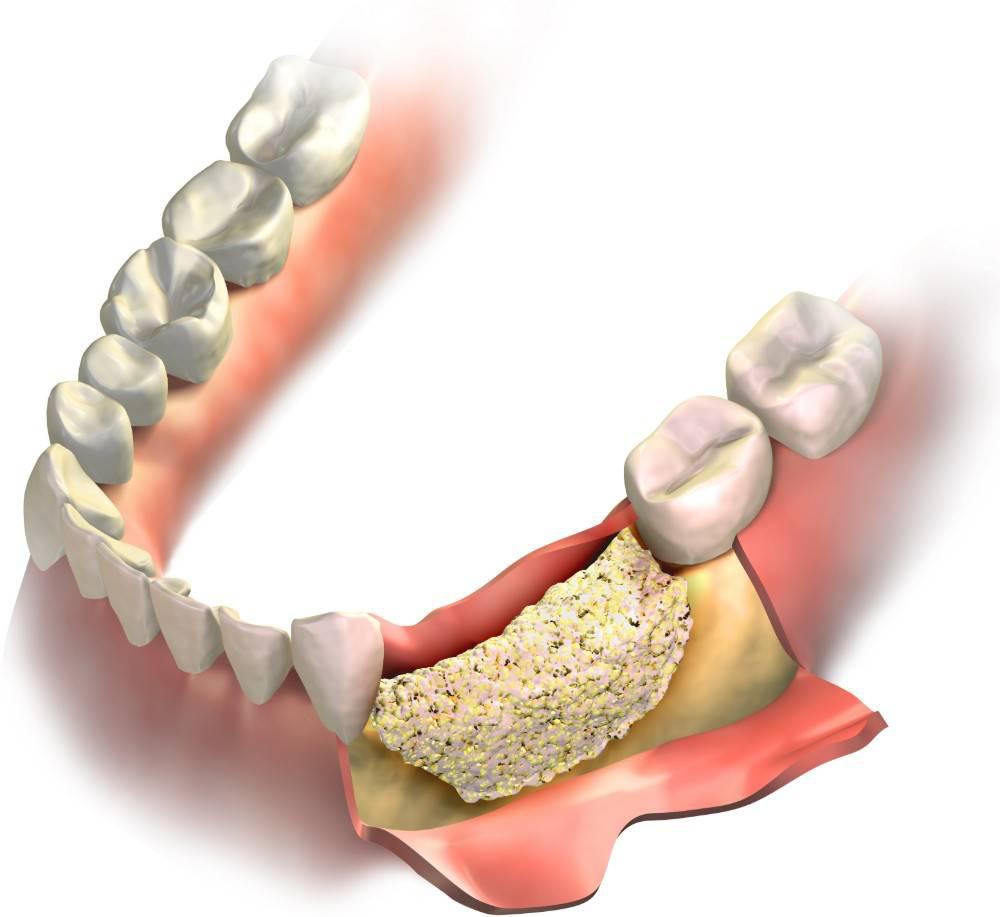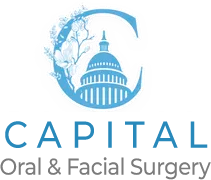Bone Grafting - Washington D.C.
 Bone grafting procedures enable our patients to take advantage of dental services that would otherwise be unavailable to them because of bone loss in their jaws. When teeth are missing, the body begins to break down the bone in the area, a process called resorption. When resorption has gone on for a while, there may not be enough bone left to anchor an implant when a patient asks for this service. And when many teeth are missing in the upper, lower, or both jaws, there can be so much bone loss that dentures can’t be used.
Bone grafting procedures enable our patients to take advantage of dental services that would otherwise be unavailable to them because of bone loss in their jaws. When teeth are missing, the body begins to break down the bone in the area, a process called resorption. When resorption has gone on for a while, there may not be enough bone left to anchor an implant when a patient asks for this service. And when many teeth are missing in the upper, lower, or both jaws, there can be so much bone loss that dentures can’t be used.
The bone graft is a method of rebuilding missing bone. Bone harvested from the patient’s own body or synthetic bone material is placed in the space where the bone is missing. Over the next few months, this material will be incorporated into new, solid bone matter.
Why Bone Graft Surgery?
Bone forms the foundation of dental implants. So, if the bone and tissues in the jaw have been damaged by resorption, bone graft dental procedures are necessary to give you the best chance of experiencing the full benefits that dental implants can bring. Therefore, any patient looking for an “oral surgeon near me” must check that a bone graft for dental implant procedures is an included service.
In addition to anchoring the implant to ensure it is accepted by the jaw, a bone graft will support the prosthetic tooth or teeth for several years. Bone graft dental surgery procedures additionally prevent further resorption, which can protect the natural teeth that you still possess while also retaining your facial shape and symmetry. In short, a bone graft can;
- Prepare your mouth for dental implants when they ordinarily wouldn’t be possible,
- Aid the integration of the dental implant as well as the long-term stability,
- Protect the jaw and surrounding natural teeth by preventing further bone mass loss,
- Keep your natural facial appearances in good health,
- Gain peace of mind from knowing that your mouth has been carefully treated.
Bone graft for implant treatments may be used on either the upper (maxillary) or lower (mandibular) jaw. Whether you need a single tooth replacement or full mouth dental implants, Capital Oral & Facial Surgery Center provides a comprehensive service underpinned by transparency and care.
The Types of Bone Graft Surgery
Dental surgery to restore this bone is a type of oral health treatment that must be completed in a safe and effective manner, which is why only the work of an experienced and excellently trained oral surgeon will suffice. General dentists in the Washington, D.C. area refer bone graft patients to Dr. Rostami for her precision care before proceeding with further dental treatments.
Here are some of the ways Dr. Rostami can help patients with bone grafts and surgery:
- Sinus lift : The roots of the upper teeth come very close to the sinuses around the nose. If bone loss occurs in this area, the bone must be thickened with a bone graft before an implant can be placed so that implants do not penetrate into the sinuses. This treatment is called a sinus lift.
- Ridge expansions : The special kind of bone that supports your teeth is referred to as ridge bone. You can lose both lateral thickness and height when teeth are missing. To support implants, this bone must be thickened by placing bone graft material within the bone, thereby encouraging the growth of more bone substances.
- Nerve repositioning : When placing implants in the lower jaw, care must be taken to avoid damaging the nerve that passes through that bone. The nerve must be repositioned, either temporarily while implants are placed or a new channel must be built for the nerve. Dr. Rostami has extensive dental surgery training and experience that allows her to perform this delicate surgery for local general dentists.
In addition to offering a comprehensive range of dental surgery bone graft treatments, Dr. Rostami’s advanced understanding and experience of oral surgery ensure that the right procedure is selected to match your individual circumstances. In turn, patients are guaranteed the best results with fast healing times and lasting rewards. Furthermore, your initial consultation will be met with full transparency so that you know exactly what to expect before, during, and after the treatment.
Are You A Candidate For A Bone Graft?
Not all patients who want dental implants will require a bone graft. However, the resorption process is particularly common in individuals who have lost their teeth several years ago. Other reasons for resorption may include cyst or tumor removal, untreated gum disease, and physical trauma caused by issues like traffic accidents and sporting injuries.
Reduced bone mass and jawbone density in the localized treatment area is the most likely reason for being a bone graft candidate. However, some patients need a bone graft for dental implant treatments because the maxillary sinus is too close to the upper jaw simply due to genetics. Whatever the reason, finding an oral surgeon near me who can safely and efficiently complete the graft as well as the dental implants is key.
The Bone Graft for Implant Procedure
The exact treatment will be determined by a number of variables linked to your individual case, such as the type of bone graft surgery that is used as well as the severity of your bone volume loss. Likewise, the treatment following untreated periodontitis varies from that after trauma, which is why it’s imperative that you seek a full consultation with a specialist that cares. Here at Capital Oral & Facial Surgery Center, we don’t just understand dental surgery. We also understand you. Your diagnosis may involve one of the following methods;
- Autogenous: bone is taken from another part of the body (often the chin or back of the jaw) and transferred to the treatment site.
- Allograft: bone material comes from another human but is otherwise treated in the same manner as autogenous bone grafts.
- Alioplasts: a synthetic bone material is used instead of natural bone. The material also aids natural bone formation.
- Xenograft: when human bone is unavailable, bone material comes from equine or bovine animals.
Whichever option is used, Dr. Rostami completes the process by making a small incision in the jaw to access the sinus or mandibular. The new bone material is then carefully inserted while taking extra care to avoid damage to the jaw. The gum tissues from the incision are then stitched up. The majority of bone graft for tooth implant procedures are completed in under 1.5 hours and cause minimal pain, although some bleeding can be expected.
Bone Graft Dental Aftercare
As with any form of dental surgery, following the right aftercare plan is essential if you want to see the full benefits of a bone graft. Any pain or discomfort, which can be managed with antibiotics and painkillers, should subside by the time that you return for a stitches removal appointment. This occurs roughly a week after the bone graft.
The new bone material will need time to integrate with the jawbone, otherwise, it will be difficult for dental implants to fuse. Whether you have autogenous/allograft or alioplast bone material, most patients can expect to wait between 6 and 9 months before the implants can be safely inserted into the mouth. It is essential that you follow a suitable oral health plan during this time, which will include using a specialized mouthwash and using soft brushing techniques to avoid damage to the gum tissues.
Additional steps may include avoiding cigarettes or tobacco and making dietary changes, as well as restricting your physical activity levels in the first week after treatment. Dr. Rostami can guide you through all aspects while additionally advising you about any side effects that require further attention.
Bone Grafting in Washington D.C. and Beyond
Even if your mouth isn’t currently in good enough health to accept prosthetic teeth, a bone graft for tooth implant treatment can restore your oral health by reversing the impacts of resorption. Whether inserting natural or synthetic bone material to the mandibular or the sinus above the upper jaw, it is the first step to rebuilding the perfect smile for many years to come.
If you’ve been told that you can’t have dental implants or suspect that a bone graft for dental implant procedures may be needed, Dr. Rostami can implement a tailored plan to restore functional and cosmetic attributes for life. Call us at (202) 296-6600 to arrange your Washington D.C. bone grafting consultation today.

